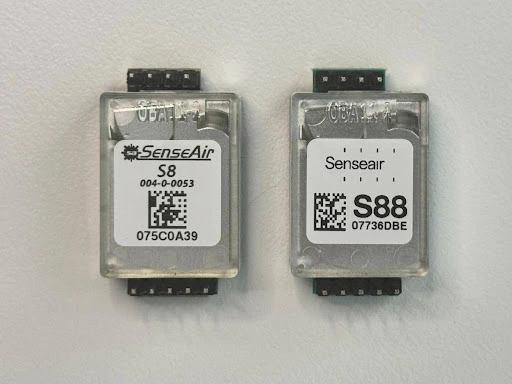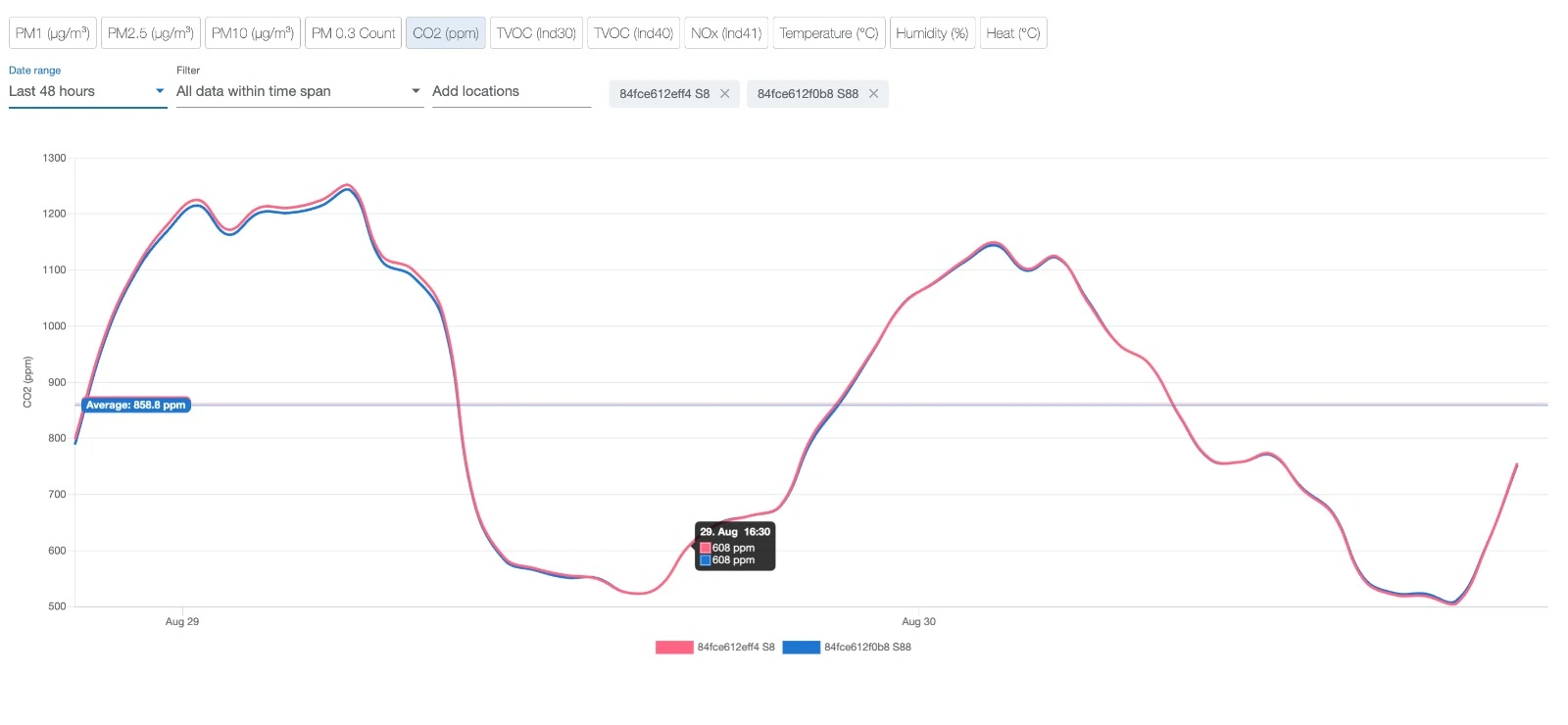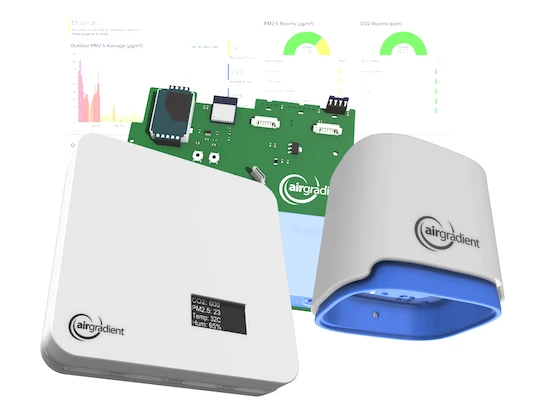AirGradient Open Source Air Quality Monitors
We design professional, accurate and long-lasting air quality monitors that are open-source and open-hardware so that you have full control on how you want to use the monitor.
Learn Moreby Ethan Brooke on November 7, 2024
For the past few years, we’ve used the SenseAir S8 carbon dioxide sensor in our indoor and outdoor monitors. After running a range of tests, we believe this sensor offers the best balance of features for our monitors, and we’ve been very happy with its performance.
However, SenseAir recently released an updated version of the S8 which has adopted the name ‘S88’. We’ve chosen to gradually swap the sensors in our monitors over from the S8 to the newer S88 because the sensors are nearly identical in performance and SenseAir recommended that we upgrade to the S88.

| Item | Senseair S88 LP Article No. 004-1-0101 | Senseair S8 LP Article No. 004-0-0053 |
|---|---|---|
| Operating principle | Non-dispersive infrared (NDIR) | Non-dispersive infrared (NDIR) |
| Measured gas | Carbon dioxide (CO2) | Carbon dioxide (CO2) |
| Measurement range | 0 to 10000 ppm | 0 to 10000 ppm |
| Measurement interval | 4 s | 4 s |
| Accuracy [CO2] | 400–2500 ppm: ±75 ppm | - |
| Accuracy [CO2] (conditions) | 400–3000 ppm: ±40 ppm ±3% of reading | 400–2000 ppm: ±40 ppm ±3% of reading |
| 3000–10000 ppm: ±10% of reading | 2000–10000 ppm: ±10% of reading | |
| Operating conditions | 0–50 °C, 0–85% RH (non-condensing) | 0–50 °C, 0–85% RH (non-condensing) |
One of the main advantages of the S88 is that it allows for altitude compensation meaning we can better cater to users who use their AirGradient monitors at higher altitudes. While this won’t impact most users, some of our customers have noticed that the current S8 sensors are less accurate at higher altitudes. If you want to learn more, this forum discussion is very insightful.
While the S88 does not have an internal air pressure sensor, it allows us to feed data into the sensor manually. While we don’t plan to include an air pressure sensor in our monitors in the near future, this feature will allow us to let users manually enter their altitude or air pressure to apply a correction formula on the dashboard.
Some people might ask why we don’t opt for the more pricey SenseAir Sunrise sensor, which does feature an internal air pressure sensor (and, therefore, is automatically compensated). These come at a significantly higher cost and would most likely increase the costs for the whole product. However, since our monitors are always powered, we opted for the S88, which we’ve found to have almost identical performance at a much lower price.
The S88 also has slightly better accuracy in the 2000-3000ppm range, and, while a fairly small upgrade, we think users will appreciate this slight improvement in performance. On top of this, we measured that the S88 also consumes slightly less power while retaining the same feature set as the S8 (CO2 baseline days, manual baseline calibration, etc).
In this chart, you can see the S8 and S88 side by side and giving virtually the same numbers:

The decision to move to the S88 was very simple for us because SenseAir has designed them to use the exact same form factor and firmware support. This means that the S88 is interchangeable with the S8 and will slot into our monitors exactly where the S8 used to. Over time, we will swap both the ONE and Open Air to the S88, but we will begin with the ONE before moving the Open Air to the S88 in the future.
So there will now be a transition period where your monitor might either be the S8 and S88 but due to the similarity we don’t believe this will be an issue.
We found out that in certain cases the manual calibration of the S88 needs repeated attempts due to its need for a stable signal. This is probably a new feature to improve the calibration but might also make it more difficult in certain cases. We have therefore decided to extent the transition period for a bit longer in order to get a better understanding how this feature behaves in the field. So it is more likely you will still receive an S8 with your air quality monitor.
Curious about upcoming webinars, company updates, and the latest air quality trends? Sign up for our weekly newsletter and get the inside scoop delivered straight to your inbox.
Join our Newsletter
We design professional, accurate and long-lasting air quality monitors that are open-source and open-hardware so that you have full control on how you want to use the monitor.
Learn More